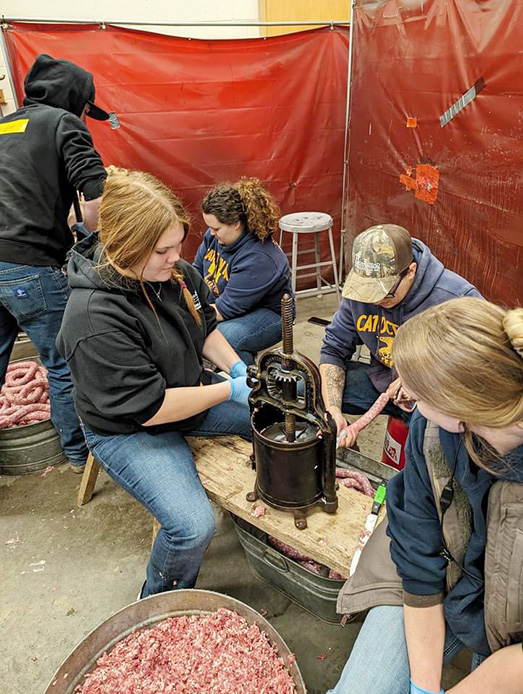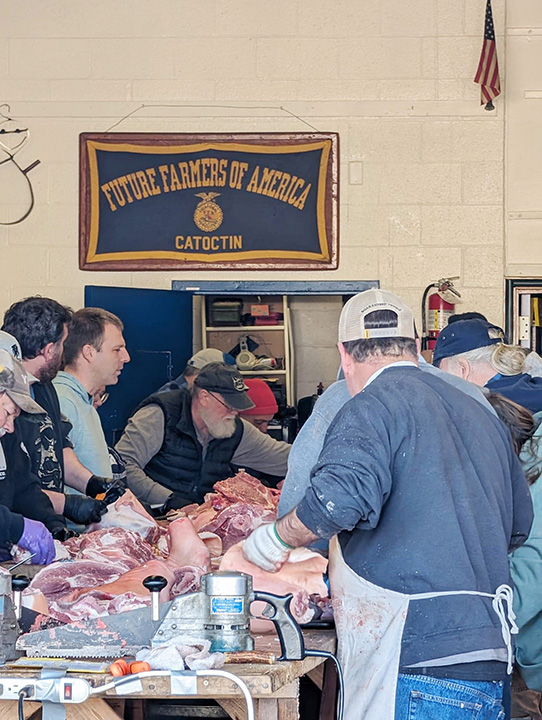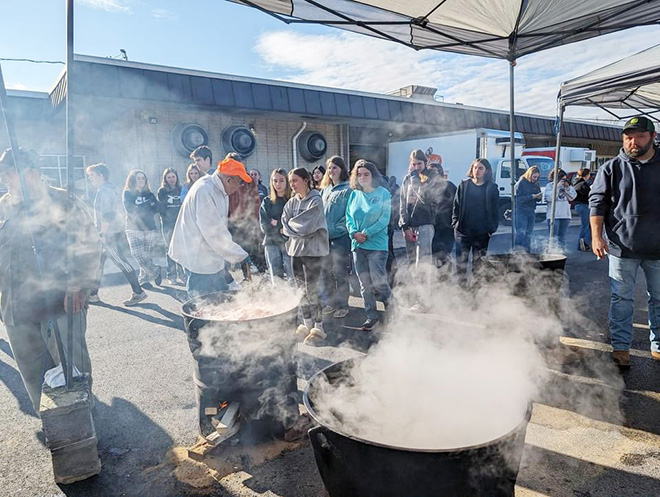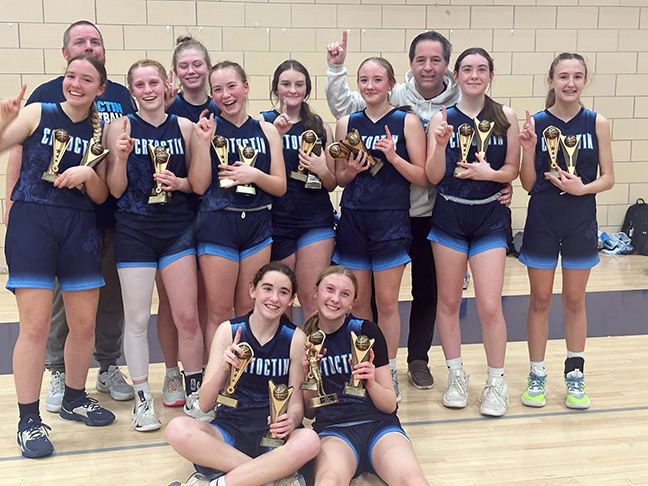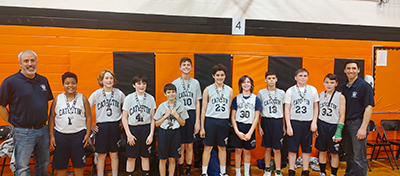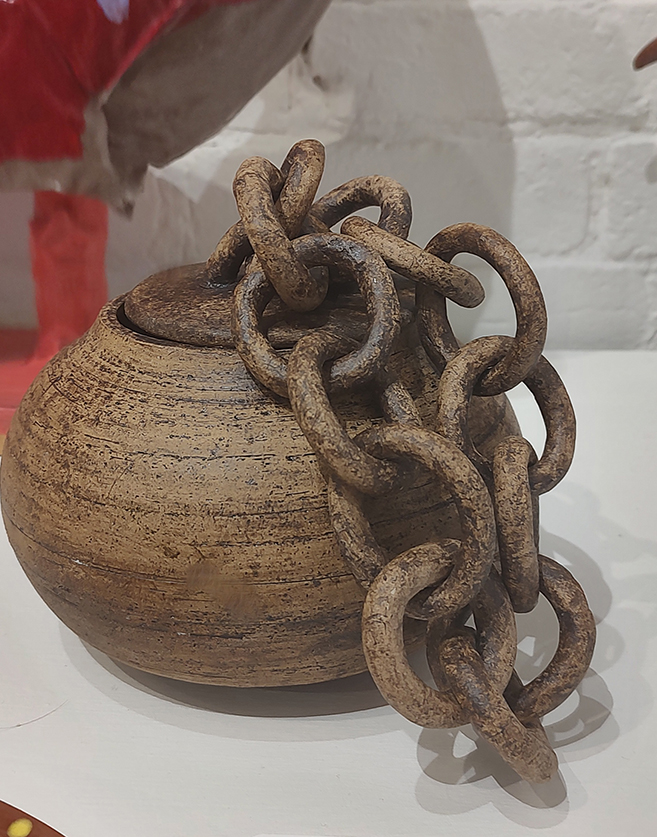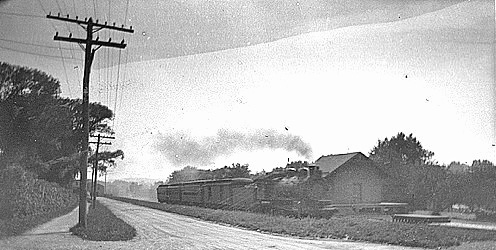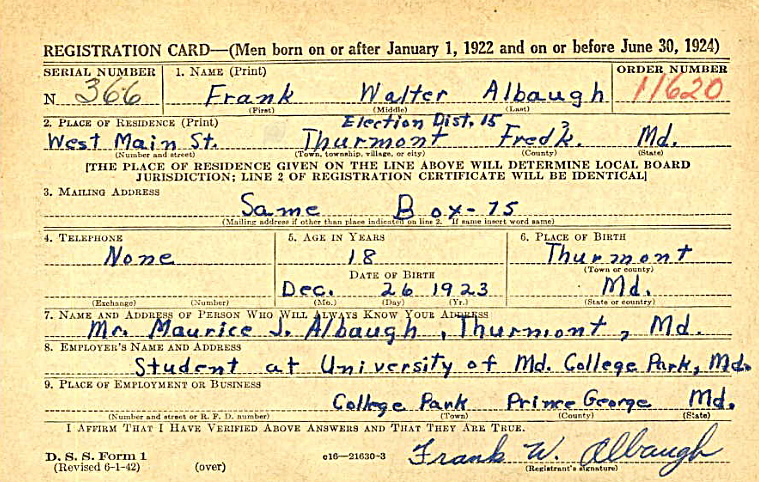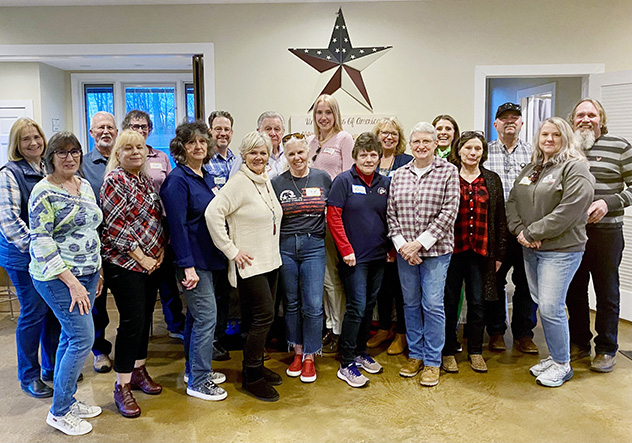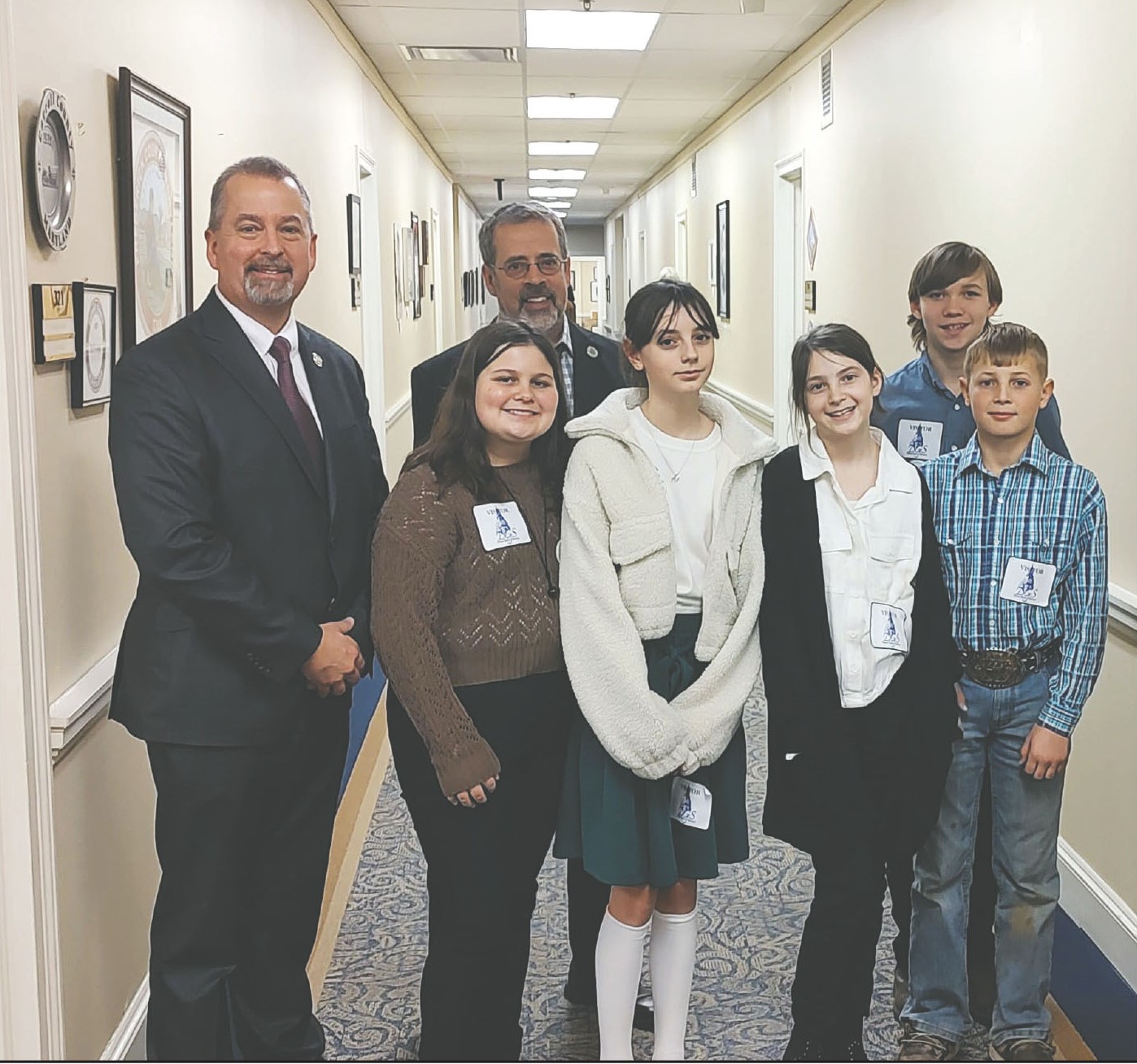Stephanie and Evan Felmet, Directors
This spring, the Catoctin High School (CHS) Drama Department is trying something a little different: a double cast show.
Little Shop of Horrors—the horror comedy rock musical—will take the CHS stage on April 18-20. The “Green” cast, led by George Hawkins and Colette Hartman-Carstensen as Seymour and Audrey, will perform on Thursday, April 18, at 7:00 p.m., and Saturday, April 20, at 7:00 p.m. The “Red” cast, led by Doug Whitworth and Anna Code in the same roles, will perform on Friday, April 19, at 7:00 p.m., and Saturday, April 20, at 1:00 p.m. Each main cast brings their own interpretation of the characters. The actors are encouraged to make their own acting and staging choices to ensure the performances are unique.
Creation of the various Audrey II puppets has taken months to complete. The man-eating plant begins as a small handheld puppet, then grows three times until it, and its grasping vines, take over most of the stage.
Meanwhile, the cast has been hard at work memorizing lines, practicing songs, and perfecting their dance steps. The crew has also been busy creating sets, lighting, and effects that will draw the audience into this bone-chilling story.
The show is rated PG-13 due to violence, substance abuse, and mild language.
What happens when a young florist finds a plant that’s out of this world?
Come find out at Catoctin High School on April 18-20.

Pictured (above) are George Hawkins, Colette Hartman-Carstensen, Doug Whitworth, and Anna Code.

